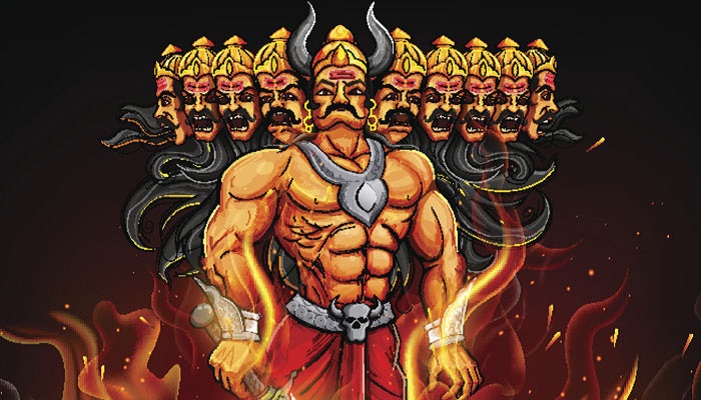Ravana in Ramayana: Exploring the Complexity of a Mythical Villain

In the epic Indian tale of the Ramayana, Ravana is often depicted as the primary antagonist, the embodiment of evil who kidnaps Sita, the wife of Lord Rama. However, like many characters in ancient epics, Ravana's character is complex, with both good and bad aspects. In this blog post, we will delve into the multifaceted nature of Ravana, examining both his positive attributes and his flaws as portrayed in the Ramayana.
The Good Side of Ravana
- Scholarship and Knowledge: Ravana was a highly learned and accomplished scholar. He was a master of the Vedas, the ancient scriptures of Hinduism, and possessed immense knowledge of various arts and sciences. His proficiency in music, architecture, and warfare is often praised in the Ramayana.
- Devotion and Piety: Despite his reputation as a villain, Ravana was a devout worshipper of Lord Shiva, one of the principal deities in Hinduism. His intense devotion to Shiva earned him great boons and powers, making him nearly invincible in battle. Ravana's piety is highlighted in his hymns and prayers to Lord Shiva found throughout the Ramayana.
- Courage and Leadership: Ravana was a fearless and charismatic leader who commanded the respect and loyalty of his subjects. He displayed remarkable courage on the battlefield, leading his army with strategic prowess and tactical skill. His leadership qualities are evident in his ability to establish and govern the prosperous kingdom of Lanka.
The Bad Side of Ravana
- Arrogance and Hubris: One of Ravana's most glaring flaws was his overwhelming pride and arrogance. His belief in his own invincibility and superiority led him to commit acts of injustice and cruelty, including the abduction of Sita. Ravana's arrogance ultimately proved to be his downfall, as it blinded him to the consequences of his actions.
- Lust and Desire: Ravana's infatuation with Sita, the wife of Lord Rama, is a central theme in the Ramayana. His unbridled lust and desire for Sita drove him to commit heinous acts, disregarding the principles of dharma (righteousness) and moral conduct. Ravana's obsession with Sita symbolizes the destructive power of unchecked desire.
- Conflict and Consequences: Ravana's antagonistic role in the Ramayana is defined by his relentless pursuit of power and conquest, which inevitably led to conflict with Lord Rama and his allies. The war between Rama and Ravana resulted in immense suffering and loss on both sides, highlighting the tragic consequences of unchecked ambition and aggression.
Conclusion: The character of Ravana in the Ramayana embodies the complexity of human nature, with both virtuous qualities and moral failings. While he is often vilified as a demonic figure, a closer examination reveals a more nuanced portrayal of a flawed but multifaceted individual. By exploring the good and bad aspects of Ravana's character, we gain insight into the timeless themes of power, morality, and redemption embedded within the epic narrative of the Ramayana.
Comments
Post a Comment